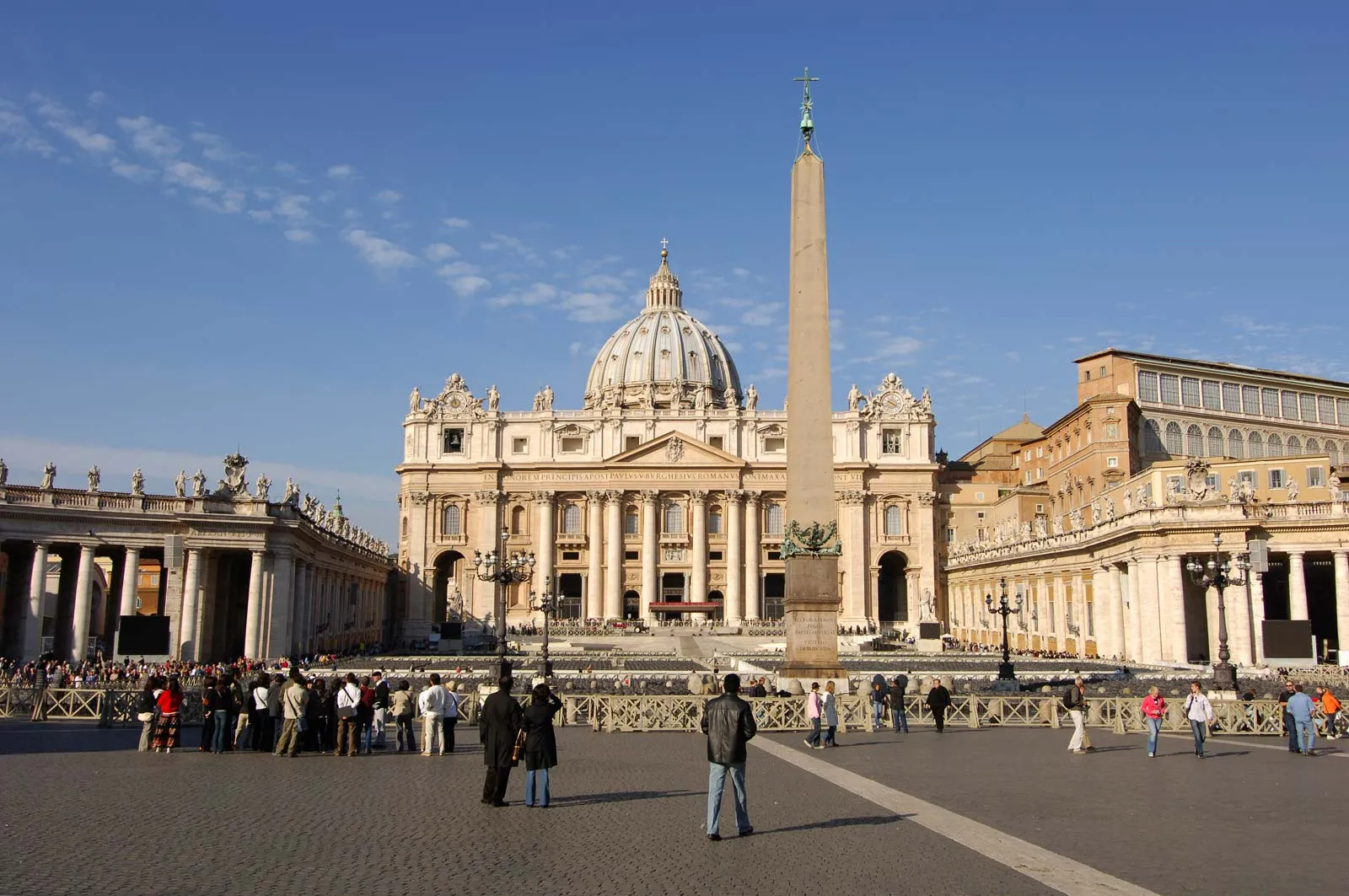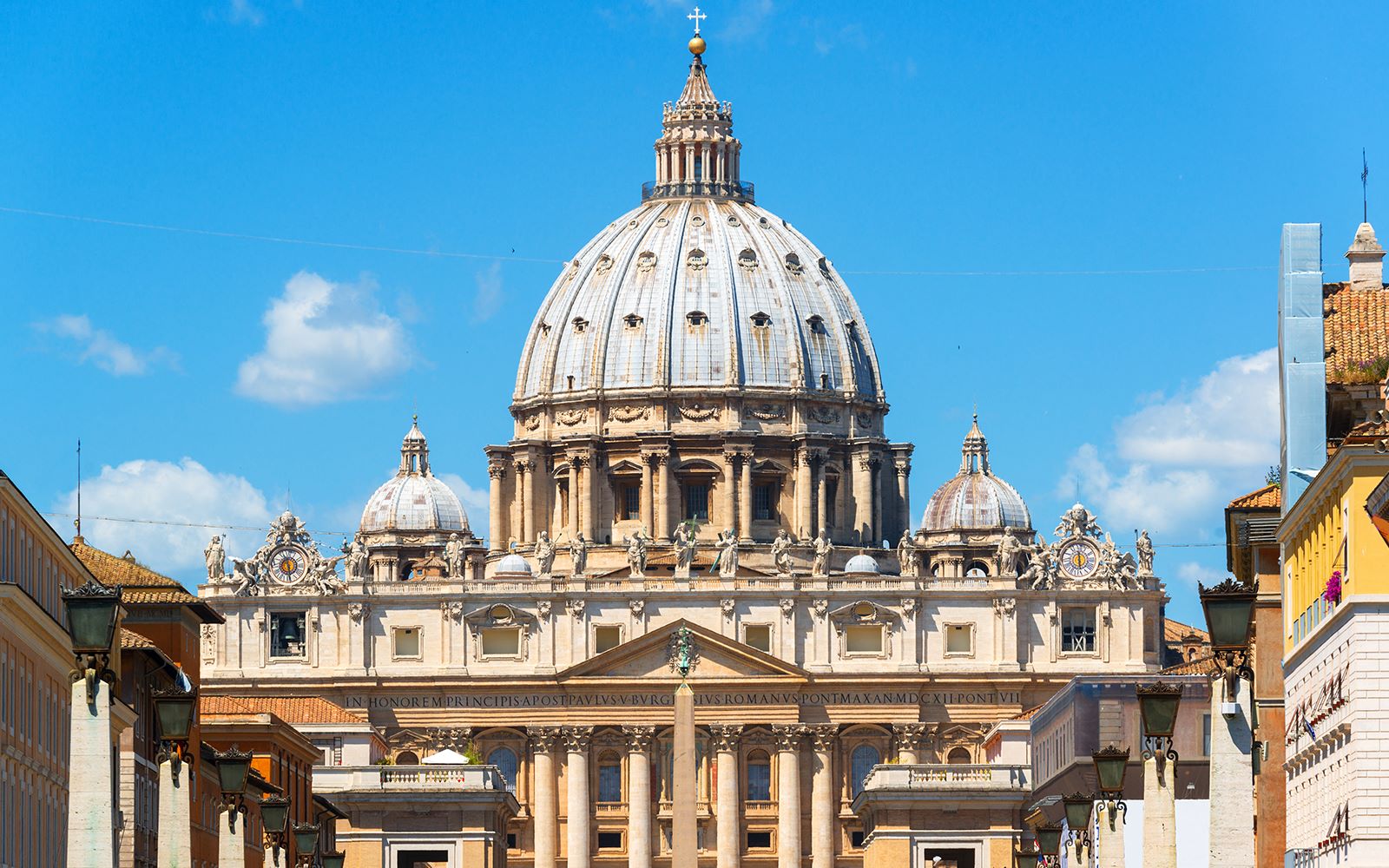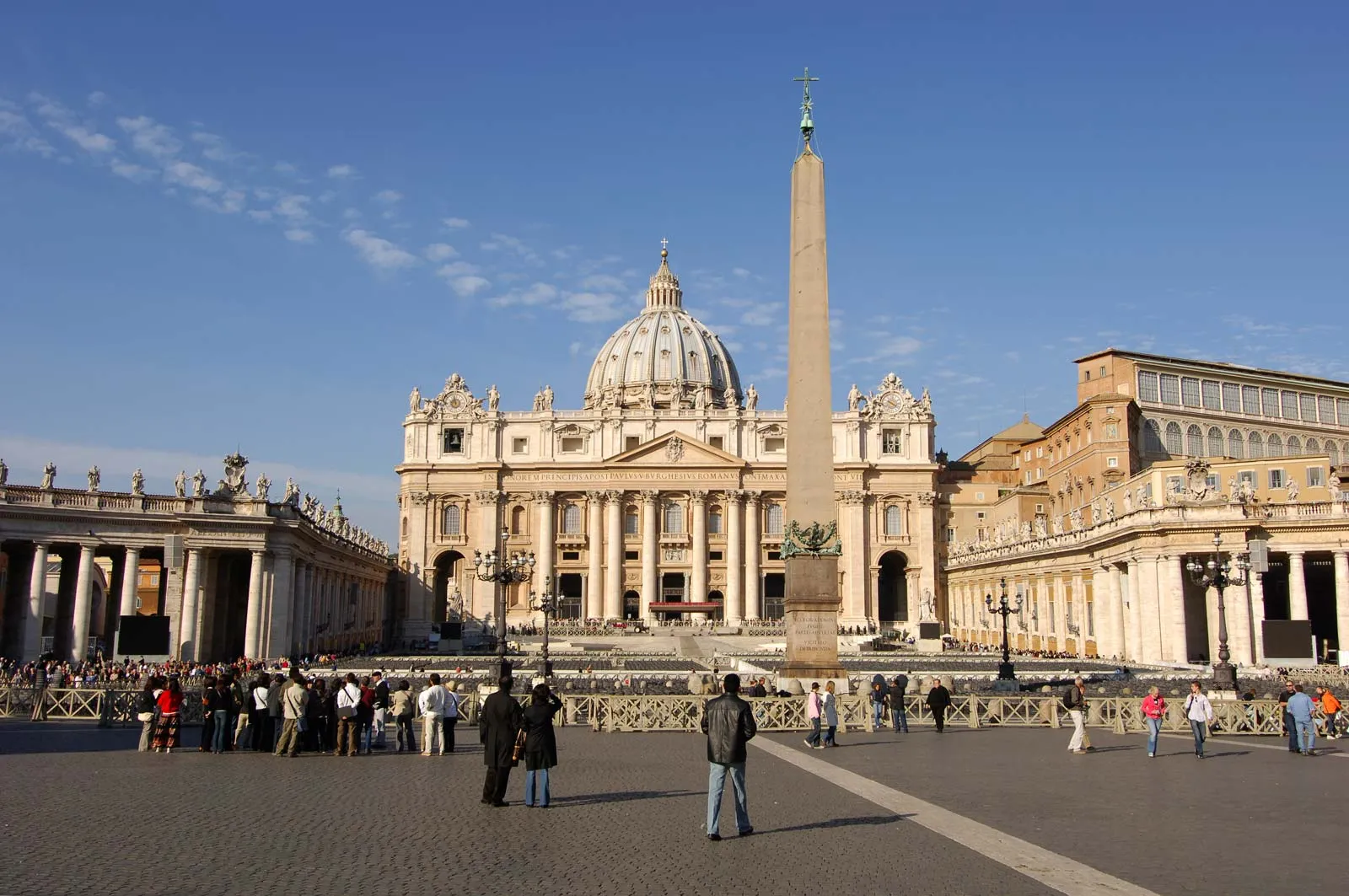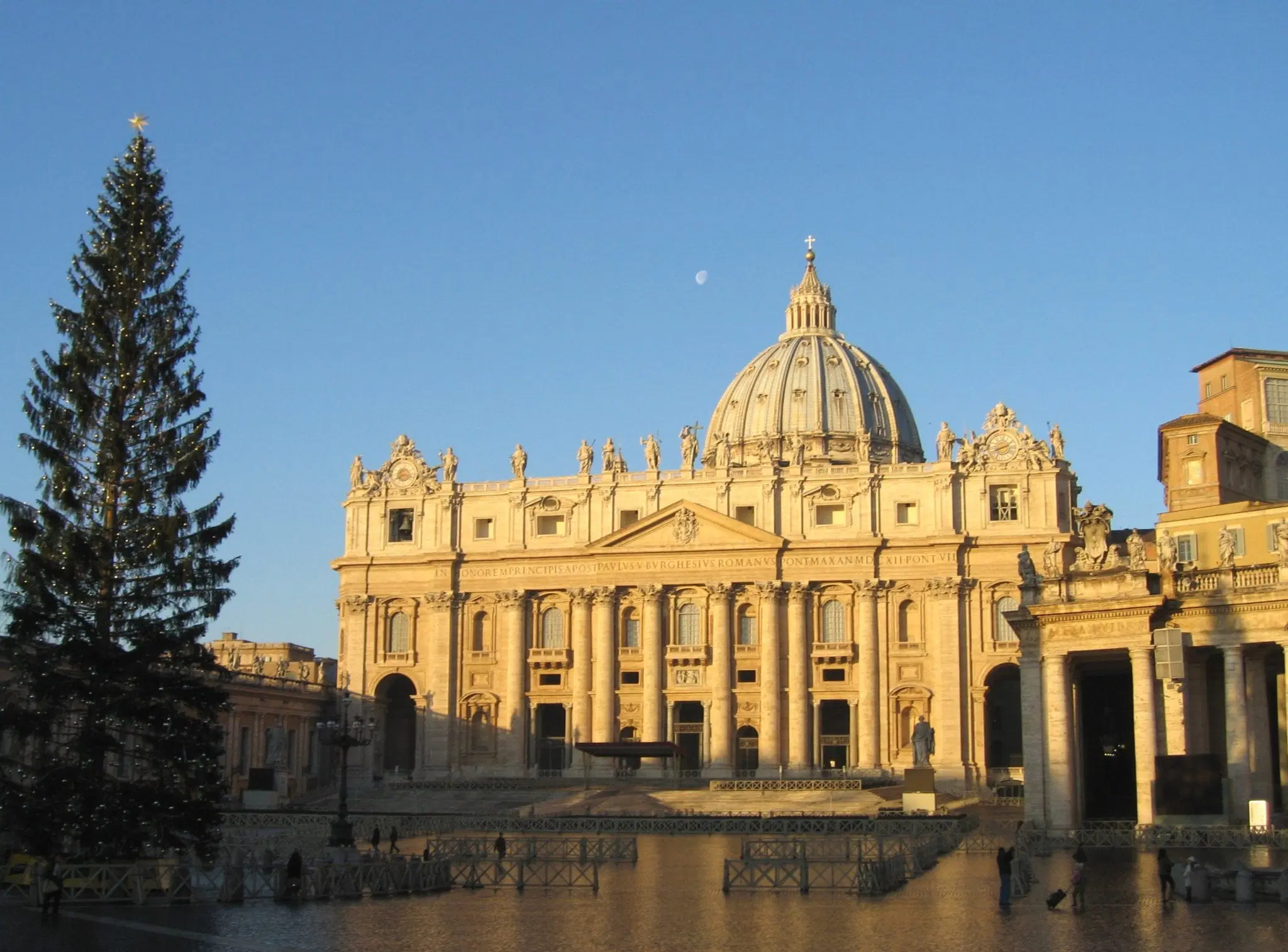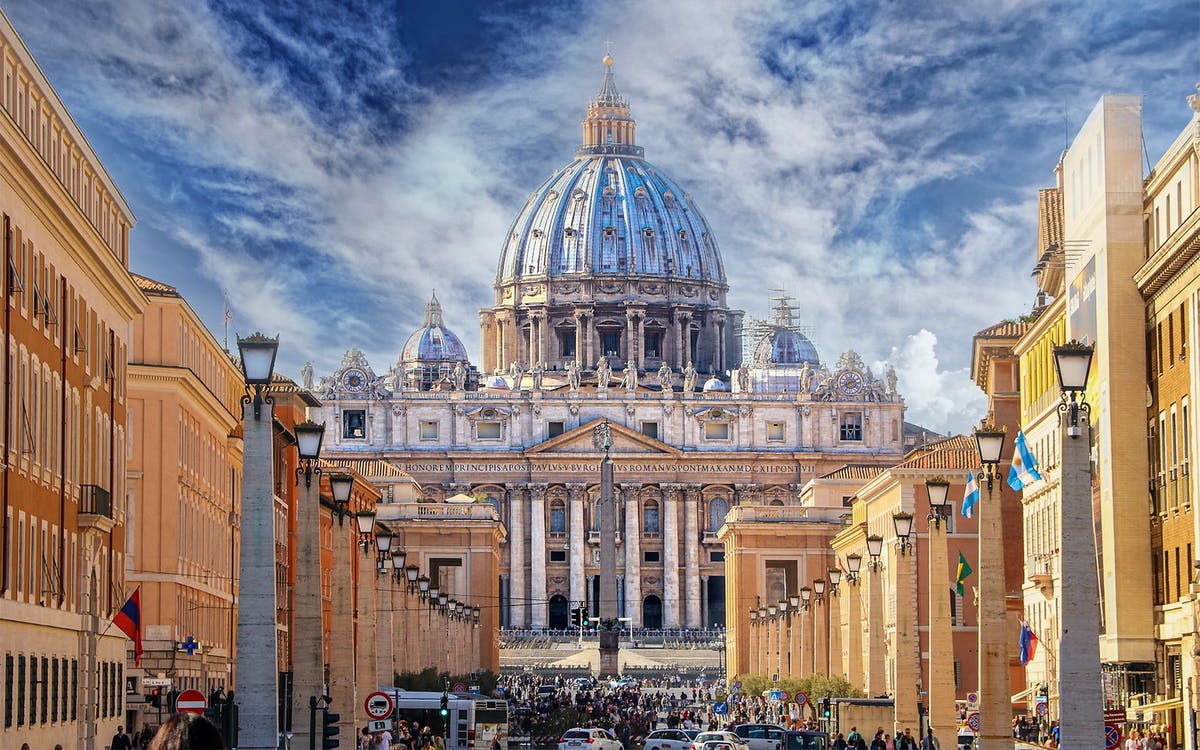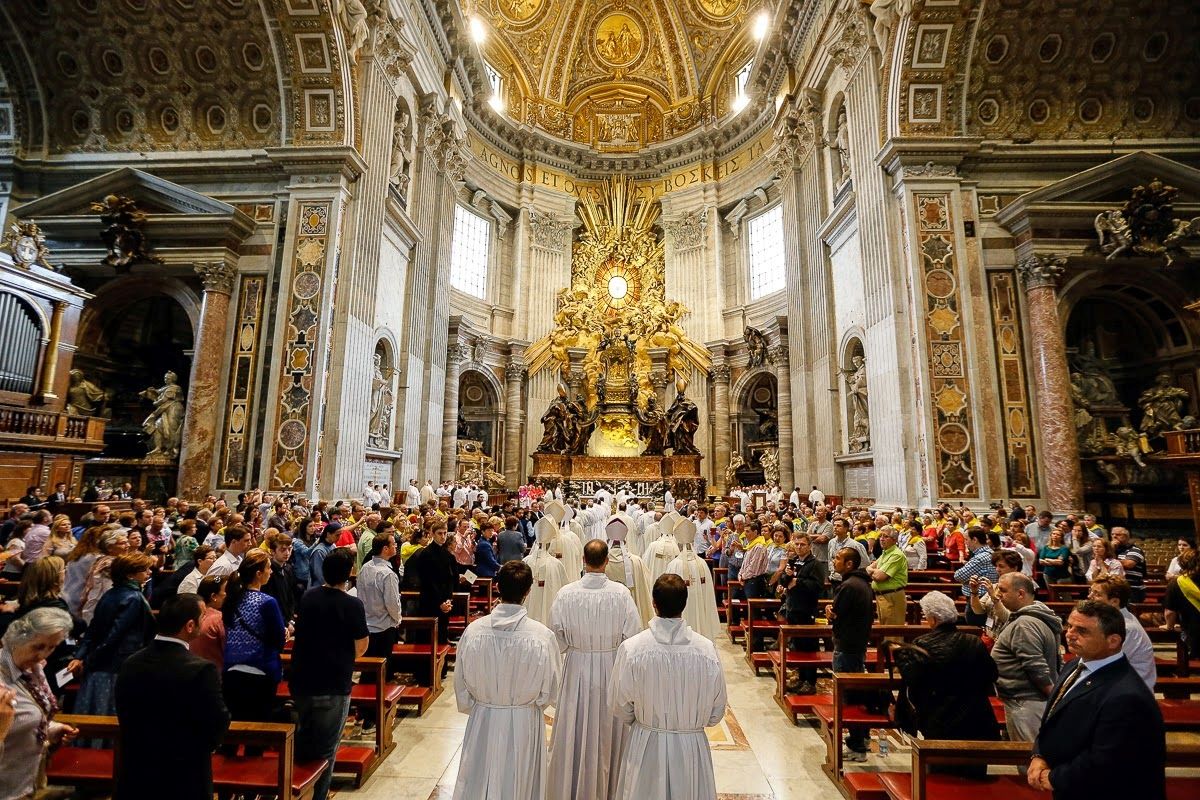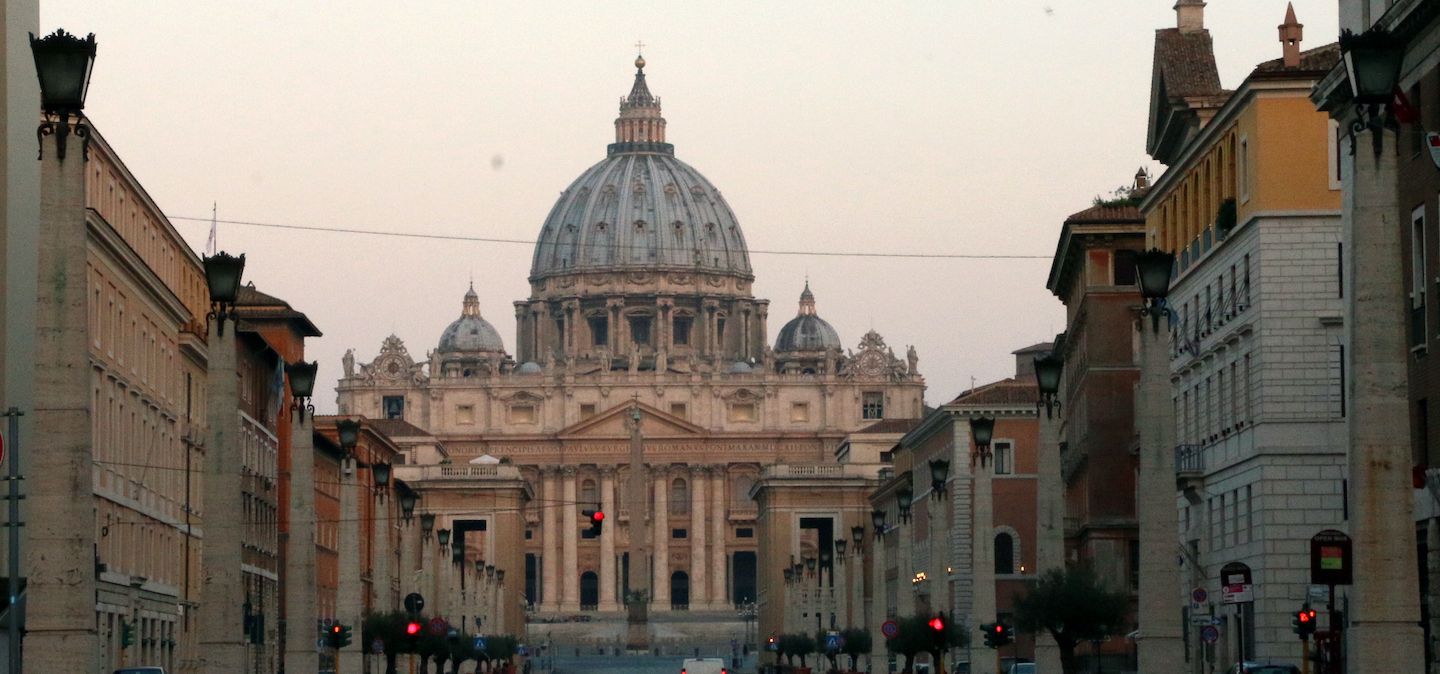Home>Arts and Culture>Why Is Saint Peter’s Basilica Considered One Of The Holiest Places Of Christianity
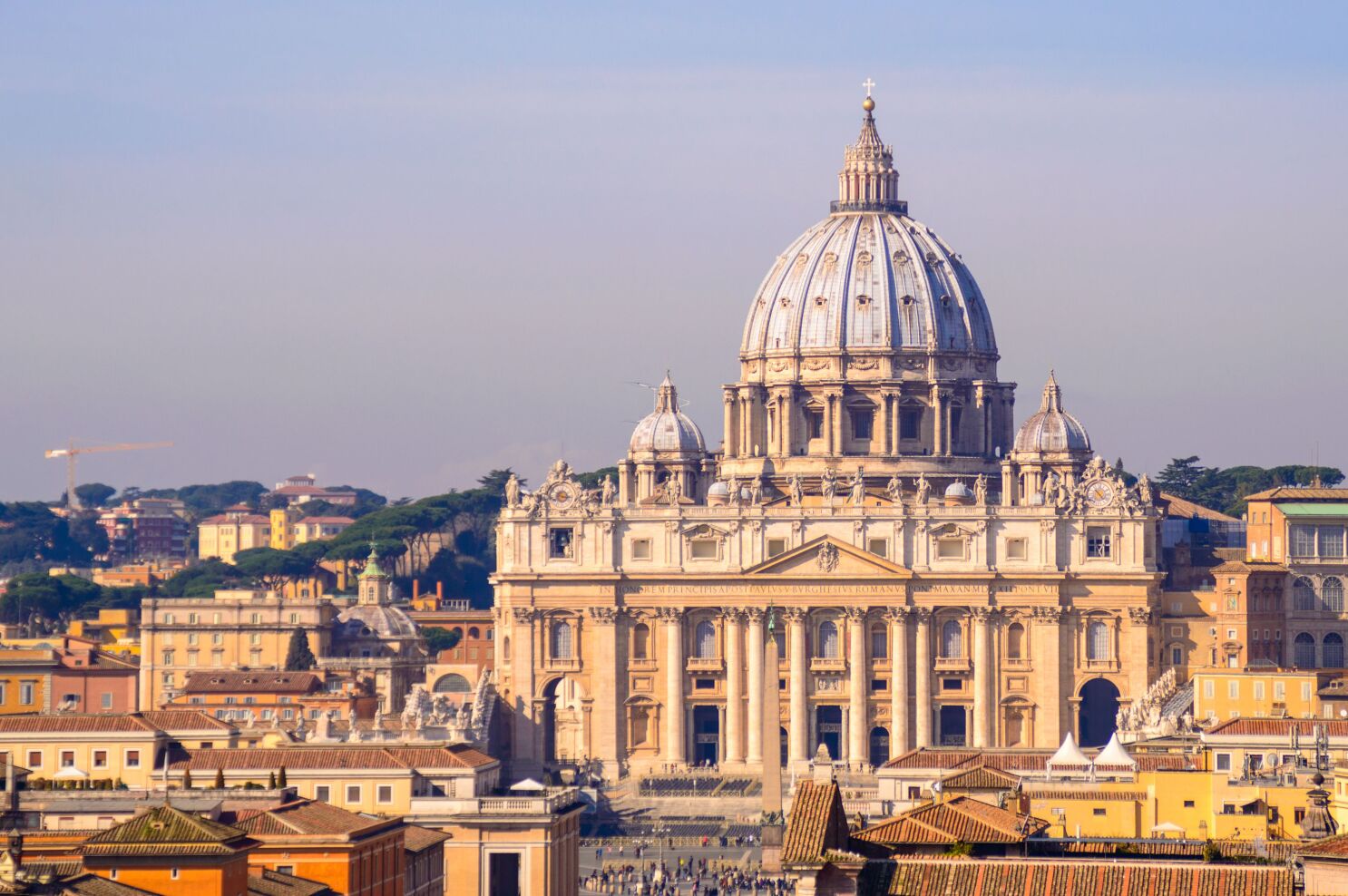

Arts and Culture
Why Is Saint Peter’s Basilica Considered One Of The Holiest Places Of Christianity
Published: February 10, 2024
Peter Smith, Editorial Director at Christian.net, combines deep insights into faith, politics, and culture to lead content creation that resonates widely. Awarded for his contributions to religious discourse, he previously headed a major organization for religious communicators, enhancing dialogue on faith's societal impacts.
Discover the significance of Saint Peter's Basilica, a revered site in Christianity, and its profound impact on arts and culture. Explore its historical and spiritual importance.
(Many of the links in this article redirect to a specific reviewed product. Your purchase of these products through affiliate links helps to generate commission for Christian.net, at no extra cost. Learn more)
Table of Contents
Introduction
Saint Peter's Basilica, located in Vatican City, is a magnificent architectural marvel that stands as a symbol of faith, history, and artistic achievement. This iconic structure holds a revered place in the hearts of millions of Christians worldwide and serves as a testament to the enduring legacy of the Catholic Church. The basilica's grandeur and spiritual significance draw pilgrims, tourists, and art enthusiasts from every corner of the globe, making it a focal point of religious devotion and cultural admiration.
The history of Saint Peter's Basilica is intertwined with the origins of Christianity and the enduring legacy of Saint Peter, one of the twelve apostles of Jesus Christ. Its construction was commissioned by Pope Julius II in the early 16th century, with the intent to replace the original basilica, which had stood for over a millennium. The renowned architects and artists who contributed to its design and embellishment, including Michelangelo, Bernini, and Bramante, infused the structure with timeless beauty and spiritual resonance.
As a place of worship, Saint Peter's Basilica holds a special place in the hearts of Catholics, serving as a site for papal ceremonies, liturgical celebrations, and moments of prayer and reflection. Its significance extends beyond religious boundaries, as it stands as a testament to the enduring power of human creativity and devotion. The basilica's awe-inspiring architecture, adorned with intricate mosaics, majestic domes, and ornate sculptures, reflects the fusion of faith and artistic expression.
The spiritual and cultural importance of Saint Peter's Basilica transcends its physical presence, as it embodies the collective heritage of Christianity and the enduring legacy of Saint Peter. Its status as a pilgrimage site draws devout believers seeking solace and spiritual renewal, while its artistic treasures captivate visitors with their timeless beauty and historical significance.
In the following sections, we will delve into the rich history, religious and cultural significance, and the allure of pilgrimage and tourism at Saint Peter's Basilica, unraveling the layers of its profound impact on the Christian faith and the global artistic heritage.
Read more: Where Is Saint Peter’s Basilica
History of Saint Peter's Basilica
The history of Saint Peter's Basilica is a tapestry woven with threads of faith, ambition, and artistic ingenuity. Its origins can be traced back to the early days of Christianity, when the apostle Peter, considered the first pope by the Catholic Church, was martyred and buried on Vatican Hill. The original basilica, built over his tomb in the 4th century by Emperor Constantine, stood as a testament to the enduring legacy of Saint Peter and the burgeoning influence of Christianity.
However, as centuries passed, the grand structure showed signs of age and deterioration. In the early 16th century, Pope Julius II envisioned a new basilica that would surpass its predecessor in magnificence and spiritual significance. The ambitious project attracted the most renowned architects and artists of the time, including Bramante, Michelangelo, and Bernini, each leaving an indelible mark on the basilica's design and embellishment.
Bramante laid the foundation for the new basilica, drawing inspiration from the grandeur of ancient Roman architecture. His vision for a centralized Greek cross plan set the stage for the basilica's iconic layout, characterized by a massive dome that would come to define the Roman skyline. However, Bramante's untimely death meant that his successors, including Raphael and Michelangelo, would carry the torch of his architectural legacy.
Michelangelo, renowned for his masterpieces in sculpture and painting, took on the daunting task of designing the basilica's dome. His architectural prowess and artistic vision culminated in a dome that soared to breathtaking heights, embodying the harmonious fusion of spiritual aspiration and human achievement. The basilica's interior, adorned with Michelangelo's Pietà and other masterpieces, stands as a testament to his enduring legacy.
The final flourish of Saint Peter's Basilica came under the guidance of Gian Lorenzo Bernini, whose contributions included the grand colonnade in St. Peter's Square and the breathtaking baldachin over the high altar. His mastery of sculptural artistry and architectural design added a layer of Baroque opulence to the basilica, elevating it to a pinnacle of artistic and spiritual expression.
Today, Saint Peter's Basilica stands as a living testament to the enduring legacy of Christianity, the artistic genius of the Renaissance and Baroque periods, and the unwavering devotion of countless believers. Its history is a testament to the enduring power of faith and the transcendent beauty of human creativity, inviting visitors to embark on a journey through time and spirituality within its hallowed walls.
Significance of Saint Peter's Basilica in Christianity
Saint Peter's Basilica holds profound significance in Christianity, serving as a spiritual beacon and a tangible link to the faith's foundational roots. Its association with Saint Peter, one of the twelve apostles of Jesus Christ and considered the first pope by the Catholic Church, imbues the basilica with immense historical and religious importance.
The basilica stands atop the site where Saint Peter, after years of spreading the teachings of Jesus, was martyred and laid to rest. This sacred connection to the apostle, revered as the "rock" upon which the Christian Church was built, elevates Saint Peter's Basilica to a place of unparalleled reverence within Christian tradition. Pilgrims and believers from around the world are drawn to this hallowed ground, seeking solace, inspiration, and a profound sense of spiritual communion.
Moreover, Saint Peter's Basilica serves as a tangible symbol of the enduring strength and continuity of the Catholic Church. As the epicenter of the papal authority, it is the site of significant religious ceremonies, including the election of new popes, papal masses, and other liturgical events that resonate deeply with the global Catholic community. The basilica's role as a venue for these pivotal moments in the Church's leadership underscores its centrality in the ongoing narrative of the Catholic faith.
The basilica's architectural grandeur and artistic treasures further amplify its significance in Christianity. The awe-inspiring dome, designed by Michelangelo, and the ornate adornments crafted by master artists of the Renaissance and Baroque periods serve as a testament to the fusion of faith and artistic expression. The basilica's interior, adorned with priceless works of art, including Michelangelo's Pietà and Bernini's baldachin, encapsulates the splendor and spiritual resonance that have captivated generations of believers and art enthusiasts alike.
Beyond its physical attributes, Saint Peter's Basilica embodies the collective memory and spiritual heritage of Christianity. It stands as a testament to the enduring power of faith, resilience, and the human quest for transcendence. The basilica's significance in Christianity transcends its architectural magnificence, resonating with the hearts and minds of believers who seek to connect with the essence of their faith and draw inspiration from its timeless teachings.
In essence, Saint Peter's Basilica stands as a living testament to the enduring legacy of Christianity, a sacred space where the past, present, and future converge in a symphony of faith, art, and spiritual devotion. Its significance reverberates through the annals of Christian history, inviting all who enter its hallowed halls to partake in a profound journey of faith and contemplation.
Religious and Cultural Importance
Saint Peter's Basilica holds immense religious and cultural significance, transcending its physical presence to embody the collective heritage of Christianity and the global artistic legacy. As a revered pilgrimage site, it draws devout believers seeking spiritual solace and renewal, while its artistic treasures captivate visitors with their timeless beauty and historical importance.
The basilica's religious importance is deeply rooted in its association with Saint Peter, one of the foremost figures in Christian tradition. Believed to have been martyred and buried on Vatican Hill, Saint Peter symbolizes the foundational rock upon which the Christian Church was built. This sacred connection elevates Saint Peter's Basilica to a place of unparalleled reverence within Christian tradition, attracting pilgrims from around the world who seek to deepen their spiritual connection to the apostle and the teachings of Jesus Christ.
Furthermore, Saint Peter's Basilica serves as a tangible symbol of the enduring strength and continuity of the Catholic Church. As the epicenter of papal authority, it is the site of significant religious ceremonies, including the election of new popes, papal masses, and other liturgical events that resonate deeply with the global Catholic community. The basilica's role as a venue for these pivotal moments in the Church's leadership underscores its centrality in the ongoing narrative of the Catholic faith.
From a cultural perspective, Saint Peter's Basilica stands as a testament to the artistic genius of the Renaissance and Baroque periods. The architectural grandeur, adorned with intricate mosaics, majestic domes, and ornate sculptures, reflects the fusion of faith and artistic expression. The basilica's interior, adorned with priceless works of art, including Michelangelo's Pietà and Bernini's baldachin, encapsulates the splendor and spiritual resonance that have captivated generations of believers and art enthusiasts alike.
Moreover, the basilica's influence extends beyond religious boundaries, as it stands as a testament to the enduring power of human creativity and devotion. Its architectural and artistic magnificence has left an indelible mark on the global cultural landscape, inspiring countless artists, architects, and visitors with its timeless beauty and spiritual significance.
In essence, Saint Peter's Basilica stands as a living testament to the enduring legacy of Christianity and the transcendent beauty of human creativity, inviting all who enter its hallowed halls to partake in a profound journey of faith and contemplation.
Pilgrimage and Tourism at Saint Peter's Basilica
Pilgrimage and tourism at Saint Peter's Basilica are intertwined with the essence of faith, history, and artistic splendor. The basilica, revered as one of the holiest sites in Christianity, attracts pilgrims from every corner of the globe, seeking spiritual enrichment and a profound connection to the apostle Peter and the teachings of Jesus Christ. Additionally, it beckons tourists and art enthusiasts, drawn by its architectural magnificence, priceless artworks, and the allure of Vatican City, the epicenter of the Catholic faith.
Pilgrims embark on a sacred journey to Saint Peter's Basilica, driven by a deep-seated desire to pay homage to the apostle Peter, whose martyrdom and burial on Vatican Hill imbue the basilica with profound spiritual resonance. For devout believers, the pilgrimage represents a transformative experience, offering moments of prayer, reflection, and spiritual communion within the hallowed halls of the basilica. The opportunity to venerate the tomb of Saint Peter and partake in religious ceremonies and liturgical celebrations enriches the pilgrims' faith and reaffirms their connection to the roots of Christianity.
Simultaneously, Saint Peter's Basilica stands as a beacon for tourists and art aficionados, allured by its architectural grandeur and the priceless masterpieces housed within its sacred precincts. The basilica's awe-inspiring dome, designed by Michelangelo, and the ornate adornments crafted by master artists of the Renaissance and Baroque periods, serve as a testament to the fusion of faith and artistic expression. Visitors are captivated by the intricate mosaics, majestic domes, and ornate sculptures that adorn the basilica's interior, each bearing the indelible mark of human creativity and devotion.
Moreover, the allure of Vatican City, with its rich tapestry of history, culture, and religious significance, adds to the appeal of pilgrimage and tourism at Saint Peter's Basilica. Pilgrims and tourists alike are drawn to the Vatican Museums, home to an extraordinary collection of art and artifacts, including the renowned Sistine Chapel, adorned with Michelangelo's breathtaking frescoes. The opportunity to witness the splendor of St. Peter's Square, designed by Bernini, and to receive the papal blessing from the balcony of the Apostolic Palace further enriches the pilgrimage and tourism experience, leaving an indelible impression on the hearts and minds of visitors.
In essence, pilgrimage and tourism at Saint Peter's Basilica offer a transformative journey through faith, art, and history, inviting pilgrims and tourists to partake in a profound exploration of spirituality and cultural heritage. The basilica's enduring allure transcends geographical boundaries, resonating with the hearts and minds of all who seek to immerse themselves in the timeless legacy of Christianity and the transcendent beauty of human creativity.
Read more: Why Is St. Peter’s Basilica Important
Conclusion
In conclusion, Saint Peter's Basilica stands as a timeless testament to the enduring legacy of Christianity, the artistic genius of the Renaissance and Baroque periods, and the unwavering devotion of countless believers. Its rich history, architectural grandeur, and profound religious and cultural significance converge to create a sacred space that transcends the boundaries of time and geography.
The basilica's association with Saint Peter, the apostle revered as the "rock" upon which the Christian Church was built, elevates its status to one of unparalleled reverence within Christian tradition. Pilgrims and tourists alike are drawn to this hallowed ground, seeking spiritual solace, inspiration, and a profound sense of connection to the apostle and the teachings of Jesus Christ.
Furthermore, Saint Peter's Basilica serves as a tangible symbol of the enduring strength and continuity of the Catholic Church. As the epicenter of papal authority, it is the site of significant religious ceremonies, including the election of new popes, papal masses, and other liturgical events that resonate deeply with the global Catholic community. The basilica's role as a venue for these pivotal moments in the Church's leadership underscores its centrality in the ongoing narrative of the Catholic faith.
From a cultural perspective, Saint Peter's Basilica stands as a testament to the artistic genius of the Renaissance and Baroque periods. The architectural grandeur, adorned with intricate mosaics, majestic domes, and ornate sculptures, reflects the fusion of faith and artistic expression. The basilica's interior, adorned with priceless works of art, encapsulates the splendor and spiritual resonance that have captivated generations of believers and art enthusiasts alike.
In essence, Saint Peter's Basilica stands as a living testament to the enduring legacy of Christianity and the transcendent beauty of human creativity, inviting all who enter its hallowed halls to partake in a profound journey of faith and contemplation. Whether as a site of pilgrimage, a cultural landmark, or a place of spiritual solace, the basilica continues to inspire and uplift the hearts and minds of all who are touched by its timeless grace and profound significance.
